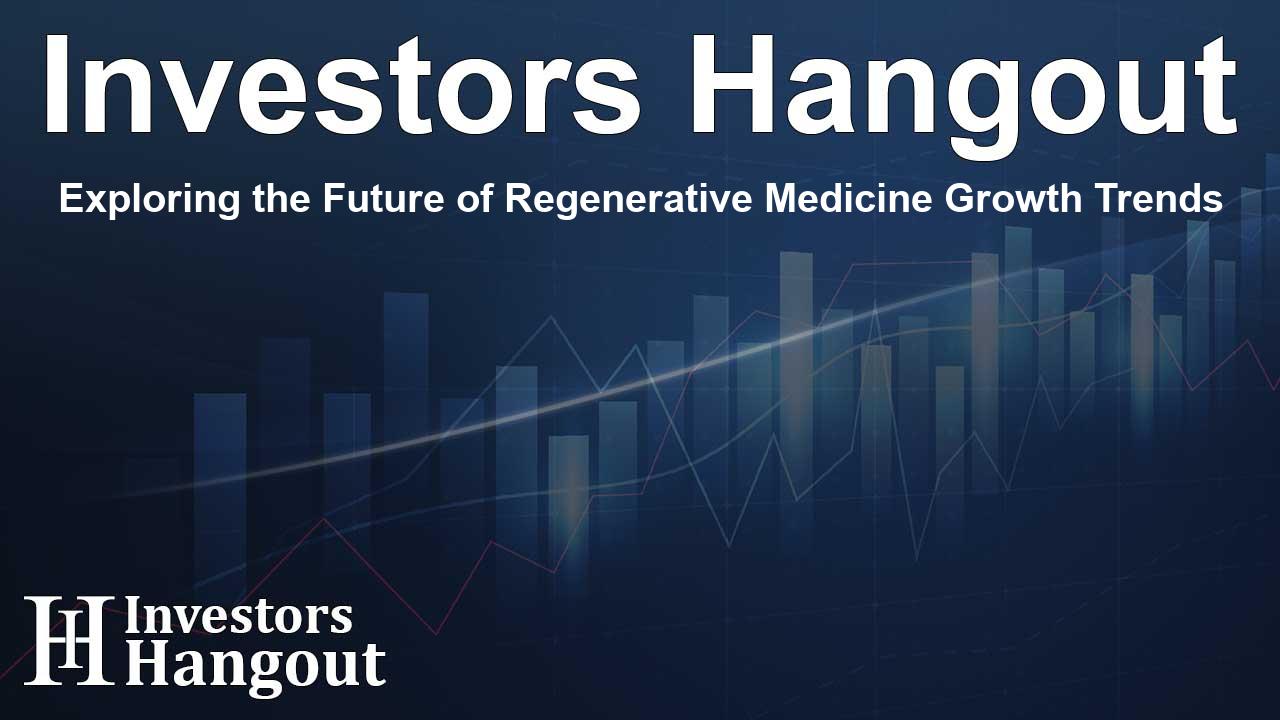Exploring the Future of Regenerative Medicine Growth Trends

Overview of the Regenerative Medicine Market
The Regenerative Medicine Market is experiencing phenomenal growth, projected to escalate from USD 32.50 billion in 2023 to an impressive USD 235.98 billion by 2032. This surge marks a robust compound annual growth rate (CAGR) of 24.66% over the upcoming years. Such remarkable growth reflects the increasing emphasis on advancing healthcare solutions, particularly in terms of therapies that repair or replace damaged tissues and organs.
Key Growth Factors Driving the Market
In recent years, regenerative medicine has emerged as a pivotal field in healthcare, primarily due to its innovative applications in areas like oncology, cardiovascular diseases, and musculoskeletal disorders. With rising chronic diseases and genetic disorders becoming more prevalent, the demand for regenerative medicine intensifies. The World Health Organization highlights that chronic maladies are responsible for 74% of global deaths, signaling a growing need for transformative healthcare solutions.
Innovations such as stem cell therapy and gene editing technologies like CRISPR are pivotal in the evolution of regenerative treatments. Research initiatives, funding, and positive regulatory approvals have significantly contributed to nurturing this market, providing new avenues for treatment and care.
Segment Analysis and Market Trends
By product type, cell therapy currently leads the regenerative medicine sector, capturing 35% of the total market share. Its applicability across numerous therapeutic domains, including cancer treatment, emphasizes its integral role in advancing regenerative medicine. The emergence of CAR-T cell therapy, designed specifically for blood cancers, is a significant advancement that showcases the potential of this sector.
On the therapeutic front, oncology garners the largest share in regenerative medicine, accounting for 40% of market engagement. The demand for advanced cancer therapies pushes the boundaries for regenerative methods, showcasing the intersection of innovation and critical need.
Market Dynamics and Recent Developments
As the global landscape shifts, several key developments shape the regenerative medicine market:
- Investment in promising companies such as Zhongzhi Pharmaceutical Holdings Ltd. enhances the landscape for Alzheimer's treatments.
- Intellia Therapeutics has gained recognition with RMAT designation by the FDA for its CRISPR-based investigational therapies, indicating a notable regulatory shift favoring innovative treatments.
- Growth in organizations focusing on workforce skill enhancement further advances the sector's strength, ensuring a robust pipeline and informed talent.
- Emerging markets in Asia-Pacific, particularly in China and Japan, present burgeoning opportunities, fueled by supportive governmental initiatives for research and development.
Regional Market Insights
In 2023, North America holds the largest share of the regenerative medicine market, primarily due to substantial investment levels and a supportive regulatory environment. With the FDA expediting approval processes for regenerative therapies, the U.S. remains a center for innovation. Europes's vast healthcare infrastructure allows it to follow closely, providing an essential base for clinical and commercial advancements.
Meanwhile, the Asia Pacific region is carving its path with significant growth driven by increasing healthcare demands and supportive research initiatives. The aging population in these areas not only elevates the need for regenerative solutions but also presents unique challenges that innovators are keen to solve.
Conclusion: The Future of Healthcare
The trajectory of the Regenerative Medicine Market points towards a transformative era in healthcare. With continual advancements in technology and a heightened focus on innovative therapies, the possibilities for treatment are expanding drastically. As more companies invest in research and clinical developments, regenerative medicine promises a future where previously untreatable ailments may find solutions.
Frequently Asked Questions
What is regenerative medicine?
Regenerative medicine involves creating therapies to repair or replace damaged tissues and organs, focusing on conditions that were previously untreatable.
What drives the growth of the regenerative medicine market?
The rising incidence of chronic and degenerative diseases, advancements in therapies, and increased funding for research are key factors fueling market growth.
Which regions are leading the regenerative medicine market?
North America is the leading market, followed by Europe and the Asia Pacific, where innovative initiatives are rapidly emerging.
How does cell therapy fit into regenerative medicine?
Cell therapy plays a crucial role as it helps in the treatment of a wide range of diseases, including cancers, by utilizing cells to replace or repair damaged tissues.
What recent advances are impacting the regenerative medicine field?
Key advancements include regulatory approvals for therapies using CRISPR technology and increased investments in companies focusing on regenerative treatments.
About Investors Hangout
Investors Hangout is a leading online stock forum for financial discussion and learning, offering a wide range of free tools and resources. It draws in traders of all levels, who exchange market knowledge, investigate trading tactics, and keep an eye on industry developments in real time. Featuring financial articles, stock message boards, quotes, charts, company profiles, and live news updates. Through cooperative learning and a wealth of informational resources, it helps users from novices creating their first portfolios to experts honing their techniques. Join Investors Hangout today: https://investorshangout.com/
Disclaimer: The content of this article is solely for general informational purposes only; it does not represent legal, financial, or investment advice. Investors Hangout does not offer financial advice; the author is not a licensed financial advisor. Consult a qualified advisor before making any financial or investment decisions based on this article. The author's interpretation of publicly available data presented here; as a result, they should not be taken as advice to purchase, sell, or hold any securities mentioned or any other investments. If any of the material offered here is inaccurate, please contact us for corrections.